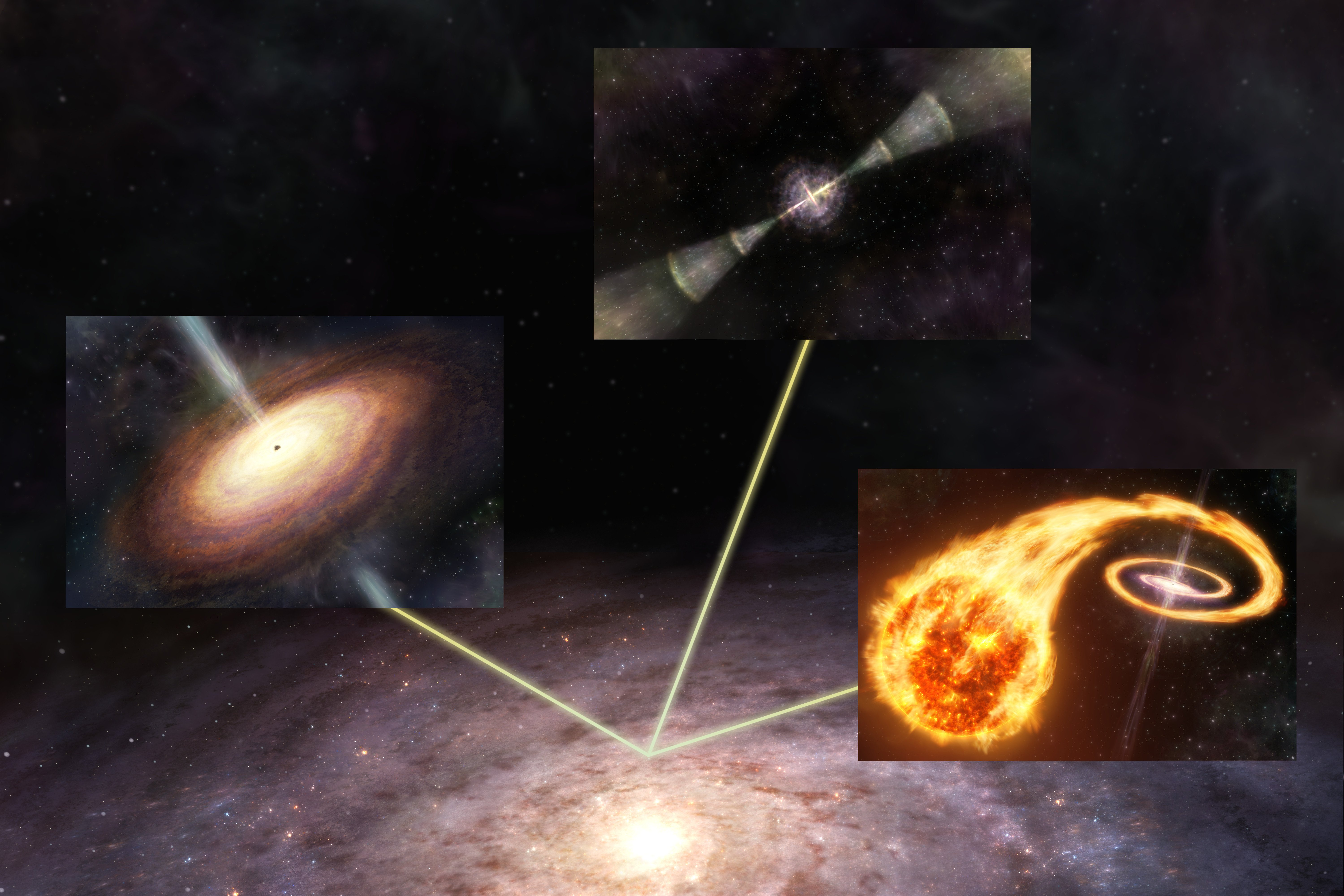| Aug 21, 2023 |
Rewriting the past and future of the Universe
|
|
(Nanowerk News) New research has improved the accuracy of the parameters governing the expansion of the Universe. More accurate parameters will help astronomers determine how the Universe grew to its current state, and how it will evolve in the future.
|
|
It is well established that the Universe is expanding. But with no landmarks in space, it is difficult to accurately measure how fast it is expanding. So, astronomers search for reliable landmarks. The same way a candle looks fainter as it gets farther away, even though the candle itself hasn’t changed, distant objects in the Universe look fainter.
|
|
If we know the intrinsic (initial) brightness of an object, we can calculate its distance based on its observed brightness. Objects of known brightness in the Universe that allow us to calculate the distance are called “standard candles.”
|
 |
| A conceptual diagram of this research. Signals from supernovae (bottom right inset), quasars (middle left inset), and gamma-ray bursts (top center inset) reach Earth in the Milky Way Galaxy (background), where we can use them to measure cosmological parameters. (Credit: NAOJ)
|
|
An international team led by Maria Giovanna Dainotti, Assistant Professor at the National Astronomical Observatory of Japan (NAOJ), and Giada Bargiacchi, PhD student at the Scuola Superiore Meridionale in Naples, with the aid of the supercomputing facilities at NAOJ run by Kazunari Iwasaki, Assistant Professor at NAOJ and member of the Center for Computational Astrophysics, ushered in a new research field by leveraging the use of a variety of new statistical methods to analyze data for various standard candles such as Supernovae, Quasars (powerful black holes consuming matter in the distant Universe), and Gamma Ray Bursts (sudden flashes of powerful radiation).
|
|
Different standard candles are useful in different distant ranges, so combining multiple standard candles allowed the team to map larger areas of the Universe.
|
|
The new results ( Astrophysical Journal, "Reducing the uncertainty on the Hubble constant up to 35% with an improved statistical analysis: different best-fit likelihoods for Supernovae Ia, Baryon Acoustic Oscillations, Quasars, and Gamma-Ray Bursts") reduce the uncertainty of key parameters by up to 35 percent.
|
|
More accurate parameters will help determine whether the Universe will continue expanding forever, or eventually fall back in on itself.
|

